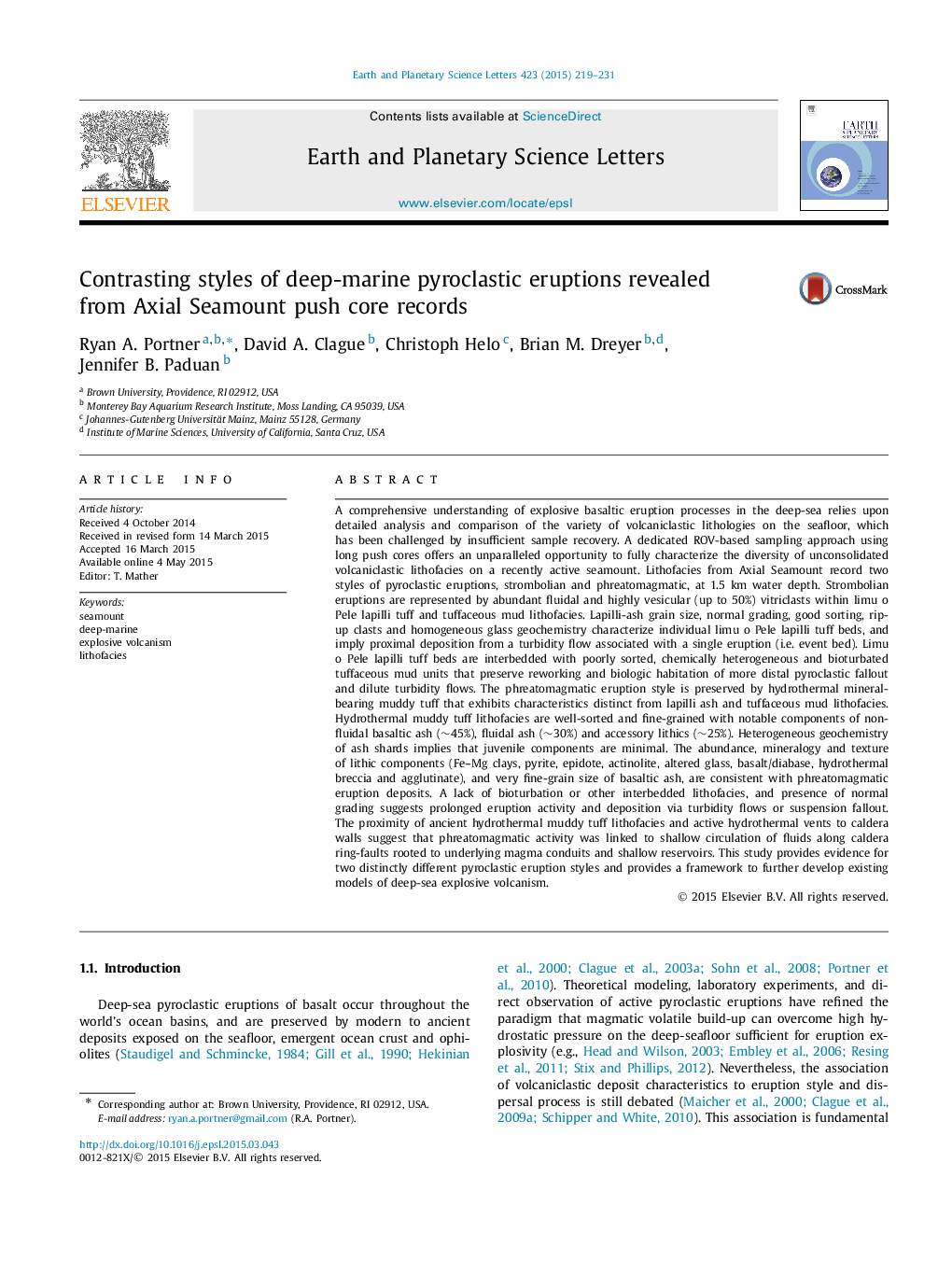| Article ID | Journal | Published Year | Pages | File Type |
|---|---|---|---|---|
| 4676983 | Earth and Planetary Science Letters | 2015 | 13 Pages |
•Clastic deposits on seamounts are diverse and preserve variable eruption styles.•Hydrothermal systems tied to caldera ring-faults cause phreatomagmatic eruptions.•Seamount caldera formation is linked to deep-marine explosive volcanism.
A comprehensive understanding of explosive basaltic eruption processes in the deep-sea relies upon detailed analysis and comparison of the variety of volcaniclastic lithologies on the seafloor, which has been challenged by insufficient sample recovery. A dedicated ROV-based sampling approach using long push cores offers an unparalleled opportunity to fully characterize the diversity of unconsolidated volcaniclastic lithofacies on a recently active seamount. Lithofacies from Axial Seamount record two styles of pyroclastic eruptions, strombolian and phreatomagmatic, at 1.5 km water depth. Strombolian eruptions are represented by abundant fluidal and highly vesicular (up to 50%) vitriclasts within limu o Pele lapilli tuff and tuffaceous mud lithofacies. Lapilli-ash grain size, normal grading, good sorting, rip-up clasts and homogeneous glass geochemistry characterize individual limu o Pele lapilli tuff beds, and imply proximal deposition from a turbidity flow associated with a single eruption (i.e. event bed). Limu o Pele lapilli tuff beds are interbedded with poorly sorted, chemically heterogeneous and bioturbated tuffaceous mud units that preserve reworking and biologic habitation of more distal pyroclastic fallout and dilute turbidity flows. The phreatomagmatic eruption style is preserved by hydrothermal mineral-bearing muddy tuff that exhibits characteristics distinct from lapilli ash and tuffaceous mud lithofacies. Hydrothermal muddy tuff lithofacies are well-sorted and fine-grained with notable components of non-fluidal basaltic ash (∼45%), fluidal ash (∼30%) and accessory lithics (∼25%). Heterogeneous geochemistry of ash shards implies that juvenile components are minimal. The abundance, mineralogy and texture of lithic components (Fe–Mg clays, pyrite, epidote, actinolite, altered glass, basalt/diabase, hydrothermal breccia and agglutinate), and very fine-grain size of basaltic ash, are consistent with phreatomagmatic eruption deposits. A lack of bioturbation or other interbedded lithofacies, and presence of normal grading suggests prolonged eruption activity and deposition via turbidity flows or suspension fallout. The proximity of ancient hydrothermal muddy tuff lithofacies and active hydrothermal vents to caldera walls suggest that phreatomagmatic activity was linked to shallow circulation of fluids along caldera ring-faults rooted to underlying magma conduits and shallow reservoirs. This study provides evidence for two distinctly different pyroclastic eruption styles and provides a framework to further develop existing models of deep-sea explosive volcanism.
